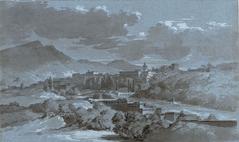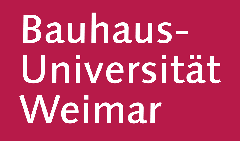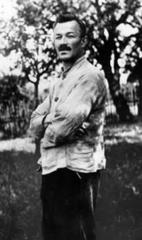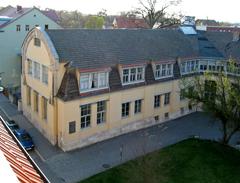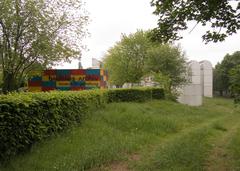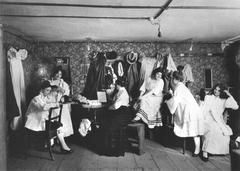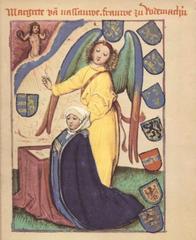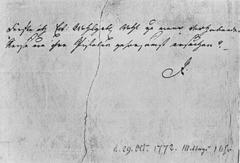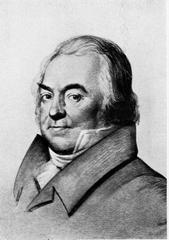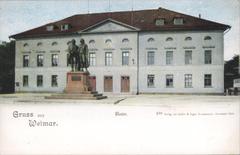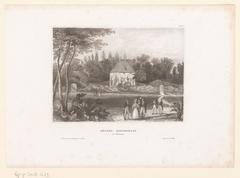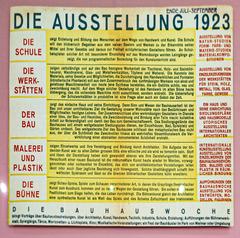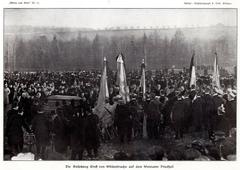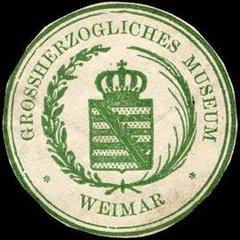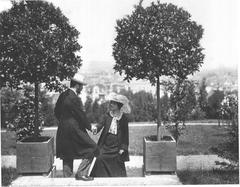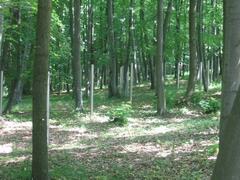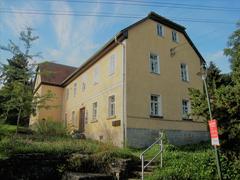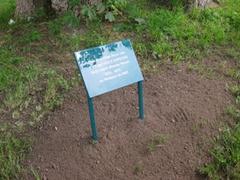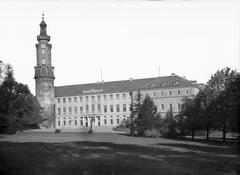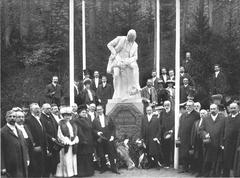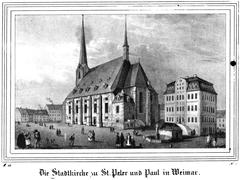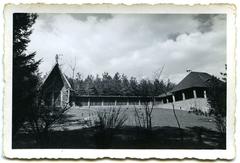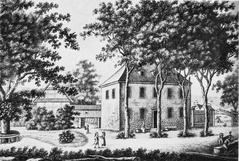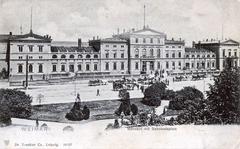
Bauhaus-Universität Weimar Visiting Hours, Tickets, and Travel Guide
Date: 14/06/2025
Introduction: The Bauhaus-Universität Weimar Legacy
Located in the historic city of Weimar, Germany, the Bauhaus-Universität Weimar embodies both the heritage of the Bauhaus movement and the vibrancy of a modern educational institution. Founded in 1919 by Walter Gropius, the Bauhaus revolutionized art, design, and architecture by merging fine arts, crafts, and industrial techniques. Today, the university’s campus—featuring landmarks like the Main Building by Henry van de Velde and the Haus am Horn—is recognized as a UNESCO World Heritage Site, preserving the legacy of this groundbreaking movement (whc.unesco.org). This guide provides a detailed overview of the university’s history, practical visitor information, travel tips, and highlights of Weimar’s cultural attractions (uni-weimar.de; wikiwand.com).
Contents
- Introduction
- History: Origins and Development
- Bauhaus Movement in Weimar (1919–1925)
- Political Pressures and Relocation
- Legacy and Post-Reunification Transformation
- UNESCO World Heritage Recognition
- Visiting Information: Hours, Tickets, Accessibility
- Guided and Self-Guided Tours
- Essential Sights on Campus
- Nearby Attractions in Weimar
- Annual Events and Unique Experiences
- Facilities, Amenities, and Visitor Tips
- Frequently Asked Questions (FAQs)
- Conclusion
- References and Official Links
History: Origins and Development (1860–1919)
The institution’s roots trace back to 1860 with the founding of the Grand Ducal Saxon Art School, initially emphasizing painting and sculpture. In 1910, its growing stature led to its elevation as the Grand Ducal Saxon College of Fine Arts. A 1905 merger with the Weimar Sculpture School and the establishment of the School of Arts and Crafts in 1907 fostered a blend of fine arts and practical craftsmanship, setting the stage for the Bauhaus’s innovative philosophy (wikiwand.com).
The Bauhaus Movement in Weimar (1919–1925)
Appointed director in 1919, Walter Gropius unified the College of Fine Arts and the School of Arts and Crafts to form the Staatliches Bauhaus in Weimar (letterformarchive.org). Gropius envisioned the abolition of boundaries between artist and craftsman, creating a holistic approach to art, design, and industry. The Bauhaus Manifesto promoted the unity of art and technology, and the concept of a “total work of art” (Gesamtkunstwerk) (bauhaus-bookshelf.org). The school quickly became a center of experimentation, attracting renowned artists and educators, and introducing a curriculum combining fundamentals of visual studies with hands-on workshops.
Political Pressures and Relocation (1924–1925)
Despite its cultural achievements, the Bauhaus faced political opposition from conservative local authorities. Budget cuts and mounting hostility forced its closure in Weimar in 1924. The school then relocated to Dessau in 1925, where it continued its innovative legacy and constructed the iconic Bauhaus building designed by Gropius (savingplaces.org).
Legacy and Post-Reunification Transformation
Even after the Bauhaus’s departure, its influence persisted in Weimar’s academic and cultural life. The State College of Fine Arts, founded in 1921, continued to foster artistic innovation. During the GDR period, the university emphasized civil engineering and technical disciplines but revived its Bauhaus heritage in the 1970s (wikiwand.com). After German reunification, the university restructured, re-establishing its Faculty of Art and Design in 1993 and Faculty of Media in 1996. The Bauhaus-Universität Weimar name was officially adopted in 1996, and today the institution offers around 40 degree programs across four faculties, with a diverse international student body (wikiwand.com).
UNESCO World Heritage Recognition
In December 1996, UNESCO inscribed the Bauhaus Sites in Weimar, Dessau, and Bernau as World Heritage Sites (whc.unesco.org). Weimar’s Main Building, Van de Velde Building, and the Haus am Horn exemplify the revolutionary ideas of Bauhaus, representing a global turning point in modernist design and architecture (uni-weimar.de).
Visiting Information: Hours, Tickets, Accessibility
Visiting Hours
- Main Buildings and Public Areas: Open Monday to Friday, 8:00–18:00.
- Bauhaus.Atelier | Info Shop Café: Monday to Saturday, hours may vary by season. Check the official website for current times.
- Exhibitions & Haus am Horn Museum: Tuesday to Sunday, 10:00–17:00; closed on Mondays and major holidays.
Tickets
- Campus Access: Free for general exploration.
- Guided Tours (Bauhaus Walks): €5–€10 per person. Advance booking is highly recommended, especially during peak seasons (Bauhaus Walks).
- Haus am Horn Museum: Separate admission applies.
Accessibility
The campus is largely accessible, with ramps and elevators in modernized buildings. Some historic structures may have limited accessibility; it is advisable to check in advance or contact Bauhaus.Atelier for specific needs. Public restrooms and limited guest Wi-Fi are available.
Guided and Self-Guided Tours
Bauhaus Walks
- Description: Student-led tours exploring the founding sites and architectural highlights.
- Schedule: Wednesdays, Fridays, and Saturdays from Bauhaus.Atelier.
- Languages: German and English.
- Booking: Official site.
Self-Guided Tours
Use the “Where’s Walter?” app for interactive campus exploration, or follow multilingual informational signage (Bauhaus-Universität Weimar).
Essential Sights on Campus
- Main Building (Hauptgebäude): Designed by Henry van de Velde (1904–1911), this UNESCO site was the birthplace of the Bauhaus movement (spottinghistory.com).
- Van de Velde Building: Another UNESCO-listed site, exemplifying early modernist design.
- Haus am Horn: The only Bauhaus-style house built in Weimar, now a museum (Destination the World).
Nearby Attractions in Weimar
- Bauhaus Museum Weimar: Showcasing Bauhaus artifacts and history.
- Goethe National Museum: Former home of Johann Wolfgang von Goethe.
- Duchess Anna Amalia Library: A UNESCO World Heritage Site.
- Ilm Park: Expansive parkland ideal for relaxation.
- Schiller’s House: Another iconic cultural site.
Annual Events and Unique Experiences
- “summaery” Festival (July): Campus-wide exhibitions, performances, and workshops, featuring contemporary student work.
- Special Exhibitions & Workshops: Held throughout the year and often open to the public.
- Bauhaus Anniversary Years: Special programming in years ending in “9” (e.g., 2019).
Facilities, Amenities, and Visitor Tips
- Cafés and Shops: Bauhaus.Atelier offers coffee, snacks, and Bauhaus-inspired souvenirs (Weimar Shop).
- Language: English and German are widely spoken by staff and guides; major signage is bilingual.
- Photography: Permitted in most public areas; always check for restrictions.
- Best Time to Visit: Spring and summer for pleasant weather and events.
- Accommodation: Numerous hotels and hostels in central Weimar (Labyrinth Hostel).
Frequently Asked Questions (FAQs)
Q: What are the Bauhaus-Universität Weimar visiting hours?
A: Main buildings are open Monday–Friday, 8:00–18:00; exhibitions and Haus am Horn, Tuesday–Sunday, 10:00–17:00. Confirm seasonal variations on the official site.
Q: Is there an admission fee?
A: General campus access is free. Guided tours and museum visits require a ticket.
Q: How can I book a tour?
A: Reserve in advance via the Bauhaus Walks page.
Q: Is the campus accessible for visitors with disabilities?
A: Most public areas are accessible; inquire ahead for specific support.
Q: Are guided tours offered in English?
A: Yes, Bauhaus Walks are available in English and German.
Q: Can I visit other Weimar attractions nearby?
A: Yes—combine your trip with visits to the Bauhaus Museum, Goethe’s House, and the Duchess Anna Amalia Library.
Conclusion
A visit to Bauhaus-Universität Weimar is a journey through the birthplace of modern architecture and design. From its UNESCO-listed buildings and innovative history to vibrant contemporary programs and accessible amenities, the university offers a rich and inspiring experience for all. Plan ahead, book your tours, and immerse yourself in the creative legacy of the Bauhaus movement.
For the latest updates, tickets, and events, consult the official Bauhaus-Universität Weimar website and related resources. Download the “Where’s Walter?” app for a self-guided interactive tour, and discover why Weimar remains a cultural beacon for art and design lovers worldwide.
References and Official Links
- UNESCO World Heritage Recognition (1996)
- Bauhaus-Universität Weimar Official Profile
- Wikiwand: Bauhaus-Universität Weimar
- A Brief History of Bauhaus Architecture
- Bauhaus Walks and Visitor Services
- Letterform Archive: Bauhaus Timeline and Masters
- Destination the World: Best Things to Do in Weimar
- Spotting History: Bauhaus University
- Weimar Shop: Bauhaus Souvenirs
- Labyrinth Hostel

